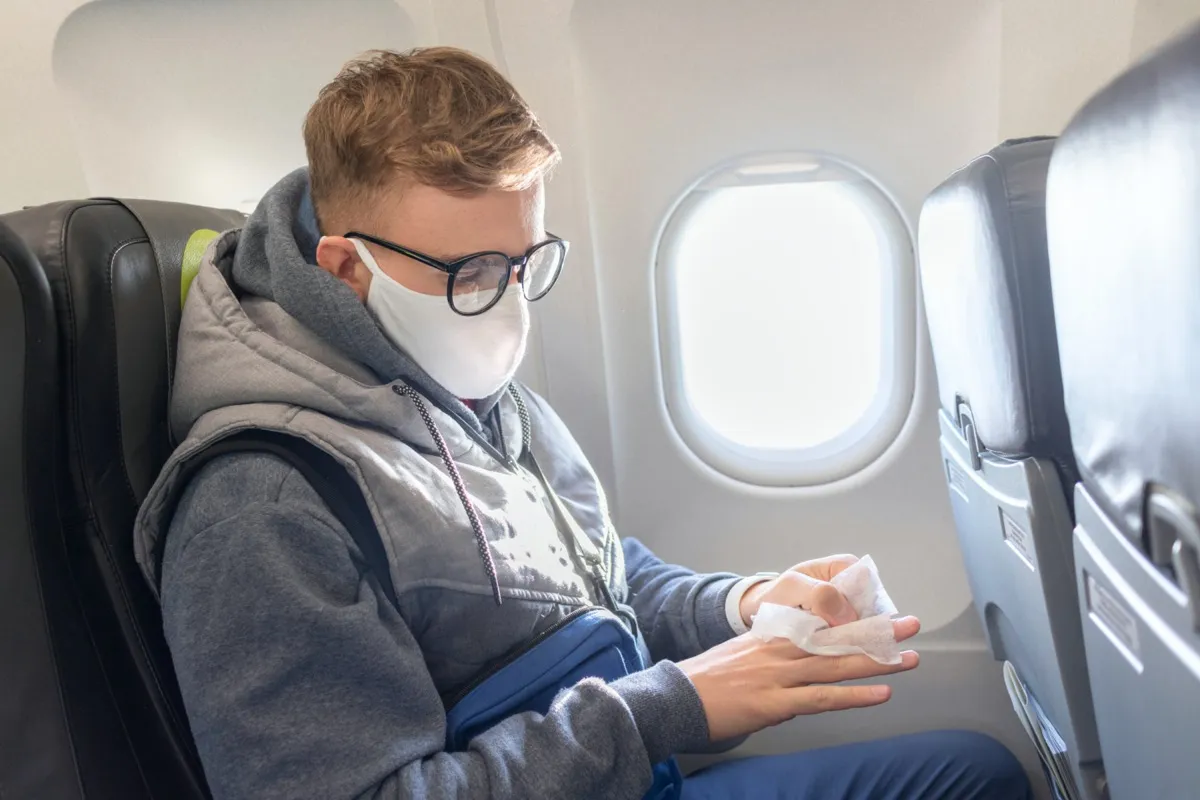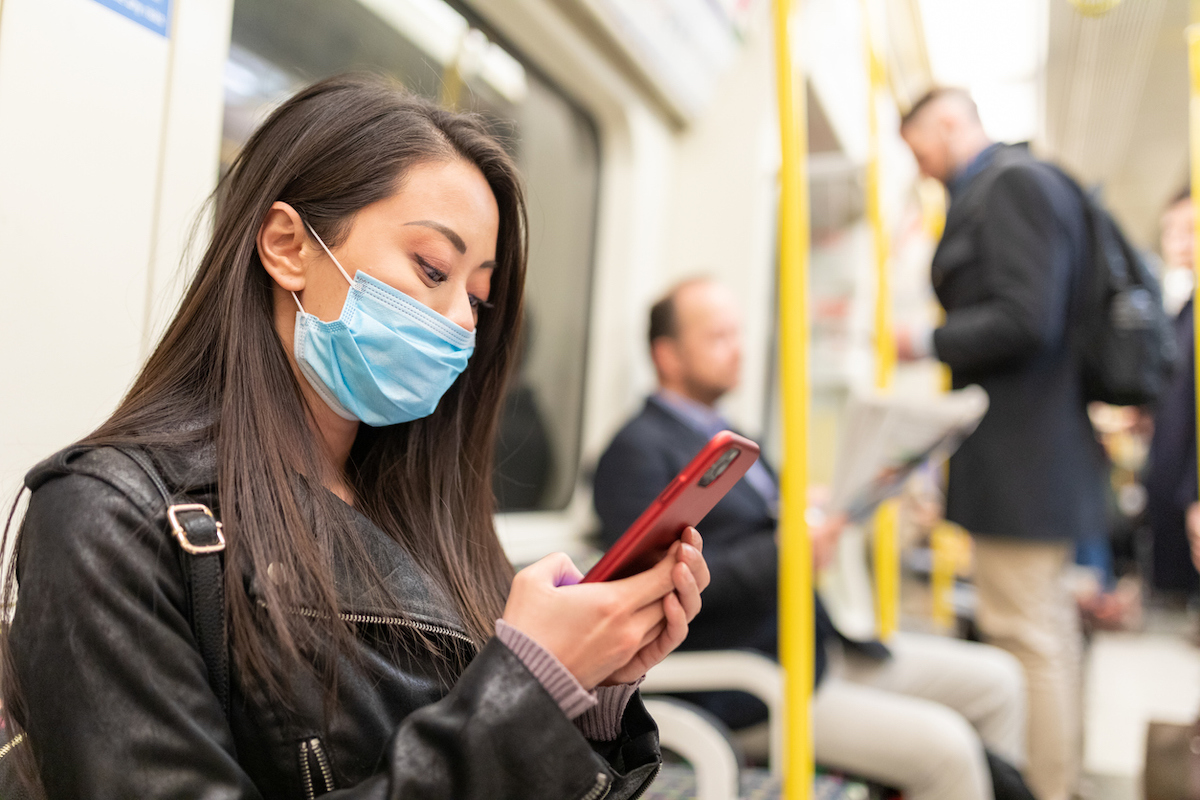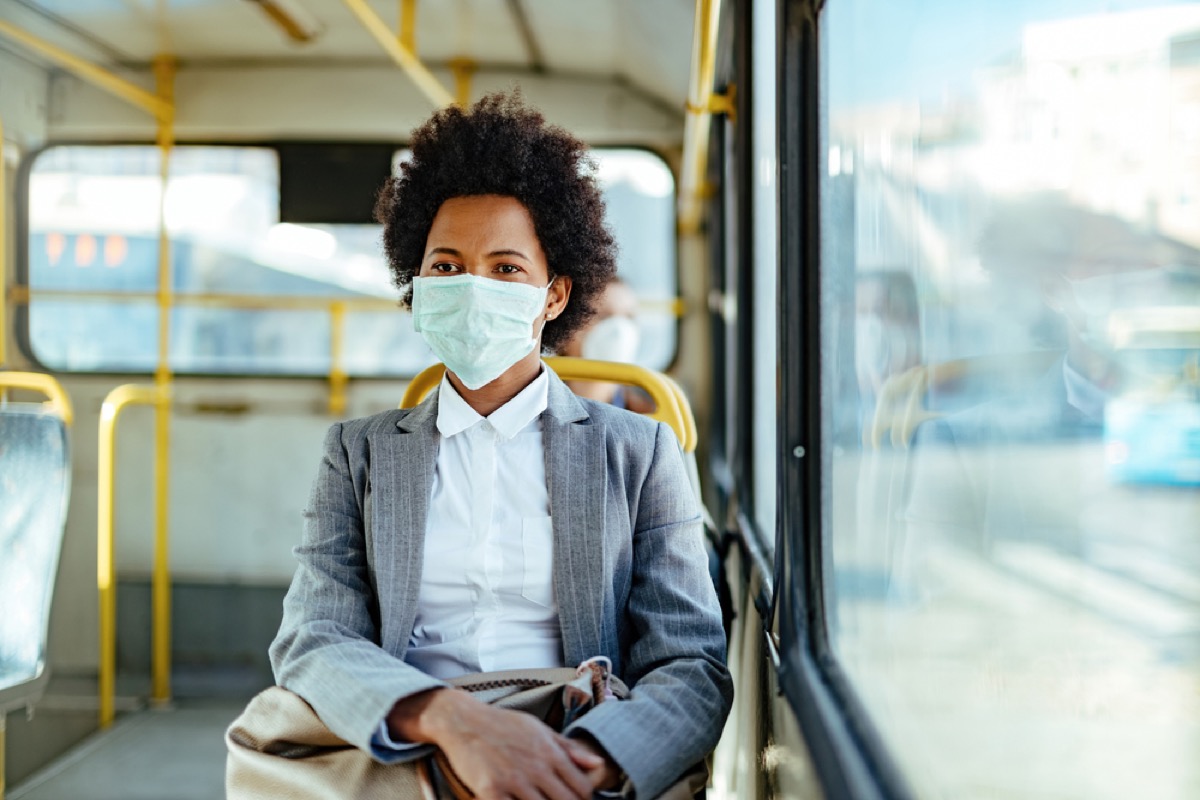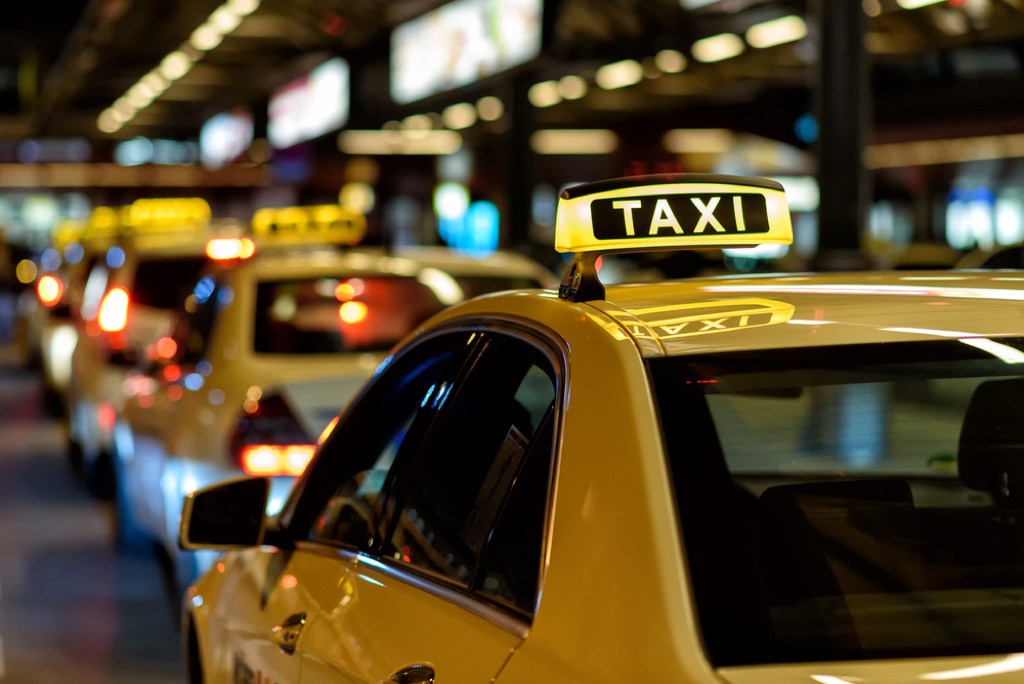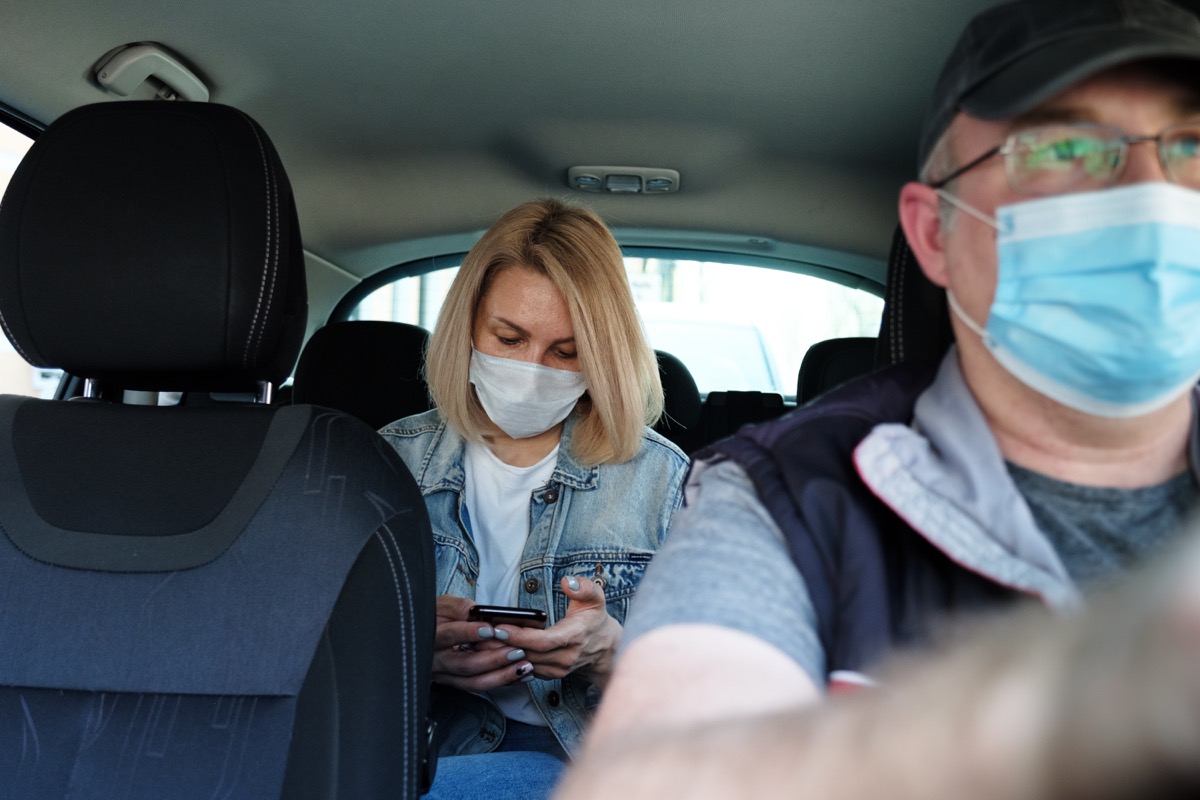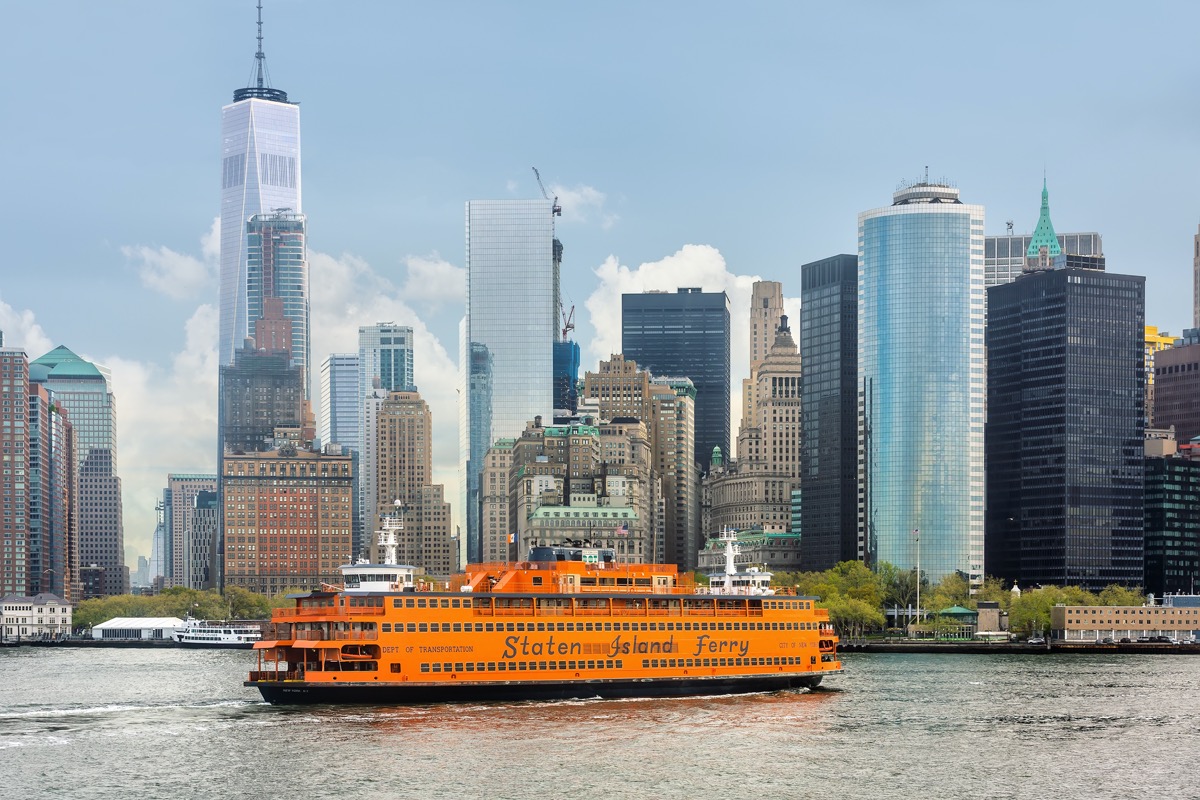In the Oct. 19 statement, the CDC said “transmission of the virus through travel has led to—and continues to lead to—interstate and international spread of the virus.” The agency also pointed out that “local transmission can grow quickly into interstate and international transmission when infected persons travel on public conveyances without wearing a mask and with others who are not wearing masks.” With that in mind, these are the seven places the CDC says you should wear a mask now. Despite recent studies showing that being on an airplane isn’t as risky as originally thought in the early days of the pandemic, masking up while you fly is still advised by the CDC. Plus, it’s a requirement for all passengers on many airlines. The agency points out that you should also be wearing your mask while passing through the airport, especially as you can get close to other people in security lines and during the boarding process. And for more on precisely where you might not be safe from coronavirus, check out This Is the Worst Place to Sit at a Restaurant Right Now, Study Finds. Just like airplanes, traveling by train increases your risk of catching coronavirus by putting you in close proximity to other passengers for an extended period of time. The CDC says that masking up ensures that you won’t be spreading potentially harmful particles to anyone else onboard. Even if you’re just crossing town instead of getting out of it, the CDC has advised that all subway passengers wear a mask while riding—especially because the lack of ventilation in underground stations can create a higher risk of COVID transmission. Besides suggesting that passengers choose less crowded cars, the agency recommends avoiding touching high-contact surfaces and to use hand sanitizer once leaving the train station. Of course, you should still wash your hands for at least 20 seconds when you arrive at your destination.ae0fcc31ae342fd3a1346ebb1f342fcb While buses may have the added benefit of easy, immediate increased circulation of fresh air, the CDC still suggests wearing a face mask while riding buses. This includes short rides on public transit or longer bus trips on coaches. It’s worth noting that one recent study found that a group retreat on a poorly ventilated bus in China was an early superspreader event. It may make immediate sense to be wary of all of the high-contact surfaces you’re forced to touch when getting in a cab. But wearing a mask while you ride in a taxi is important, especially because enclosed car interiors will easily expose you to any droplets exhaled by the driver. The CDC recommends increasing ventilation in the vehicle by also lowering the windows, even if it’s just a bit. And for more on the latest COVID travel news, check out This State’s Governor Just Urged Residents “Not to Travel” Due to COVID. Hailing a ride through an app on your phone is one of the greatest conveniences of the modern era, but it’s also an easy way to accidentally expose yourself to the coronavirus. And it’s not just the CDC that thinks you should be covering your face: many rideshare companies have set forth strict rules for passengers that can result in your ride being canceled or your account being banned if you enter the vehicle without wearing a mask. And for more COVID updates delivered to you daily, sign up for our newsletter. Not everyone is so lucky to be able to commute by boat, but that scenic morning ride is still a potentially risky venue for catching COVID. If you’re hitting the water, the CDC recommends that you spread out from other passengers or choose an area of the deck with a good breeze or ample ventilation. And for more on potential coronavirus warning signs, check out If Your Food Tastes Like These 2 Things, You May Have COVID.
